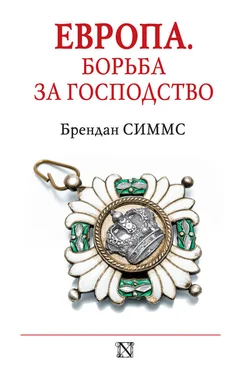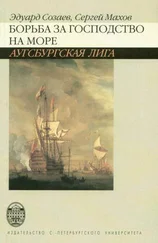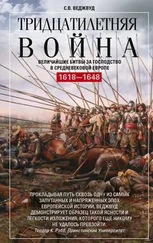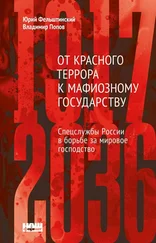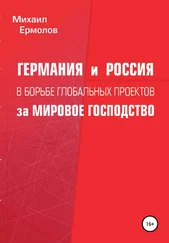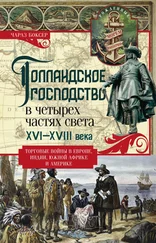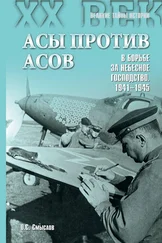Kiran Klaus Patel, Soldiers of labor. Labor service in Nazi Germany and New Deal America, 1933–1945 (Cambridge and New York, 2005), pp. 4, 72 and 228–9.
«Народным сообществом» ( нем .) . Примеч. ред.
«Народные товарищи» ( нем .) . Примеч. ред.
Wolfram Wette, ‘Ideology, propaganda and internal politics as preconditions of the war policy of the Third Reich’, in Militärgeschichtliches Forschungsamt (ed.), Germany and the Second World War. Vol. I. The build-up of German aggression (Oxford, 1990).
Patrizia Albanese, Mothers of the nation. Women, families and nationalism in twentieth century Europe (Toronto, Buffalo and London, 2006), pp. 32–44 (quotation p. 36).
Zach Shore, ‘Hitler’s opening gambit. Intelligence, encirclement, and the decision to ally with Poland’, Intelligence and National Security, 14, 3 (1999), quotation p. 112.
R. J. Overy, ‘German air strength 1933 to 1939: a note’, Historical Journal, 27, 2 (1984), pp. 465–71.
Jonathan Haslam, The Soviet Union and the struggle for collective security in Europe, 1933–39 (London, 1984), pp. 1–226, especially p. 2.
Wesley K. Wark, The ultimate enemy. British intelligence and Nazi Germany, 1933–1939 (Ithaca, 1985).
Ramsden, ‘Churchill and the Germans’, p. 131. For the mainstream view see Philip Towle, ‘Taming or demonising an aggressor: the British debate on the end of the Locarno system’, in Gaynor Johnson (ed.), Locarno revisited: European diplomacy, 1920–1929 (London and New York), pp. 178–98 (pp. 190–91).
Bret Holman, ‘The air panic of 1935: British press opinion between disarmament and rearmament’, Journal of Contemporary History, 46, 2 (2011), pp. 288–307 (quotation p. 295).
Arnold A. Offner, American appeasement. United States policy and Germany, 1933–1938 (Cambridge, Mass., 1969), pp. 12, 59 and passim, and Alonzo L. Hamby, For the survival of democracy. Franklin Roosevelt and the world crisis of the 1930s (New York, 2009).
Mary E. Glantz, FDR and the Soviet Union. The president’s battles over foreign policy (Lawrence, Kan., 2005), pp. 17–35.
Nation, Black earth, red star, p. 117.
О связи преувеличенных страхов окружения, польского «коварства» и репрессий на Украине и в Белоруссии: Timothy Snyder, Bloodlands. Europe between Hitler and Stalin (New York, 2010), pp. 30–31, 37, 42, 71 and 89.
R. Heller, ‘East Fulham revisited’, Journal of Contemporary History, 6, 3 (1971), pp. 172–96; C. Stannage, ‘The East Fulham by-election, 25 October 1933’, Historical Journal, 14, 1 (1971), pp. 165–200. Также: Philip Williamson, Stanley Baldwin (Cambridge, 1999).
See Mona Siegel, ‘“To the Unknown Mother of the Unknown Soldier”. Pacifism, feminism, and the politics of sexual difference among French institutrices between the wars’, French Historical Studies, 22, 3 (1999), pp. 421–51, especially pp. 428–9.
Benedikt Stuchtey, ‘“Not by law but by sentiment”. Great Britain and imperial defense, 1918–1939’, in Roger Chickering and Stig Förster (eds.), The shadows of total war. Europe, East Asia, and the United States, 1919–1939 (Cambridge, 2003), pp. 255–70 (quotation p. 263)
Darwin, Empire project, p. 457.
Michaela Hoenicke Moore, Know your enemy. The American debate on Nazism, 1933–1945 (Cambridge, 2010), pp. 78–93 and 341–2.
Государственная корпорация по развитию и освоению долины реки Теннесси, одного из наиболее отсталых в промышленном отношении районов США в первой половине XX столетия . Примеч. ред.
По названию итальянского города на озере Лаго-Маджоре, где состоялась встреча руководителей Великобритании и Италии и министра иностранных дел Франции . Примеч. ред.
Alan Bullock, Hitler. A study in tyranny (London, 1952), p. 315.
Hildebrand, Das vergangene Reich, p. 623.
Pierre-Henri Laurent, ‘The reversal of Belgian foreign policy, 1936–1937’, The Review of Politics, 31, 3 (July 1969), p. 370.
Nicole Jordan, The Popular Front and central Europe. The dilemmas of French impotence, 1919–1940 (Cambridge, 1992).
Antony Beevor, The battle for Spain. The Spanish Civil War, 1936–1939 (London, 2006).
David Patterson, A genealogy of evil. Anti-semitism from Nazism to Islamic Jihad (Cambridge, 2011).
Silvio Pons, Stalin and the inevitable war, 1936–1941 (London and Portland, 2002).
John Lamberton Harper, American visions of Europe. Franklin D. Roosevelt, George F. Kennan and Dean G. Acheson (Cambridge, 1994), p. 67.
J. Noakes and G. Pridham (eds.), Nazism. A history in documents and eyewitness accounts, 1919–1945. Vol. II: Foreign policy, war and racial extermination (New York, 1988), quotation p. 685.
David Dilks, ‘“We must hope for the best and prepare for the worst”. The prime minister, the Cabinet and Hitler’s Germany, 1937–1939’, Proceedings of the British Academy, LXXIII (1987), p. 325.
B. J. C. Roi and M. L. McKercher, ‘“Ideal” and “punchbag”: con icting views of the balance of power and their in uence on interwar British foreign policy, diplomacy and statecraft’, Diplomacy and Statecraft, 12, 2 (2001), pp. 47–78 (quotation, p. 53).
Daniel Hucker, ‘French public attitudes towards the prospect of war in 1938–1939’, French History, 21, 4 (2007), pp. 431–4; Jerry H. Brookshire, ‘Speak for England, act for England: Labour’s leadership and British national security under the threat of war in the late 1930s’, European His – tory Quarterly, 29, 2 (1999), pp. 251–87.
Maurice Cowling, The impact of Hitler. British politics and British policy, 1933–1940 (Chicago and London, 1975).
Tobias Jersak, ‘A matter of foreign policy: “Final Solution” and “Final Victory” in Nazi Germany’, German History 21, 3 (2003), pp. 369–91 (quotation p. 378).
John Thompson, ‘Conceptions of national security and American entry into World War II’, Diplomacy and Statecraft, 16, 4 (2005), pp. 671–97 (quotations pp. 673–4).
Thompson, ‘Conceptions of national security’, p. 674.
Читать дальше
Конец ознакомительного отрывка
Купить книгу
